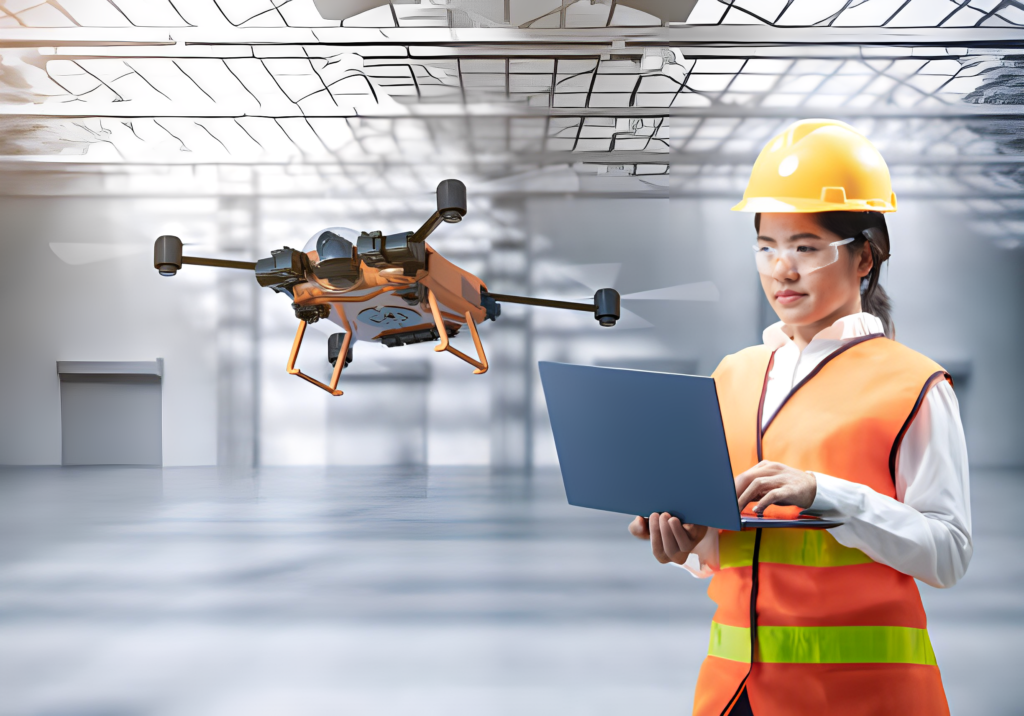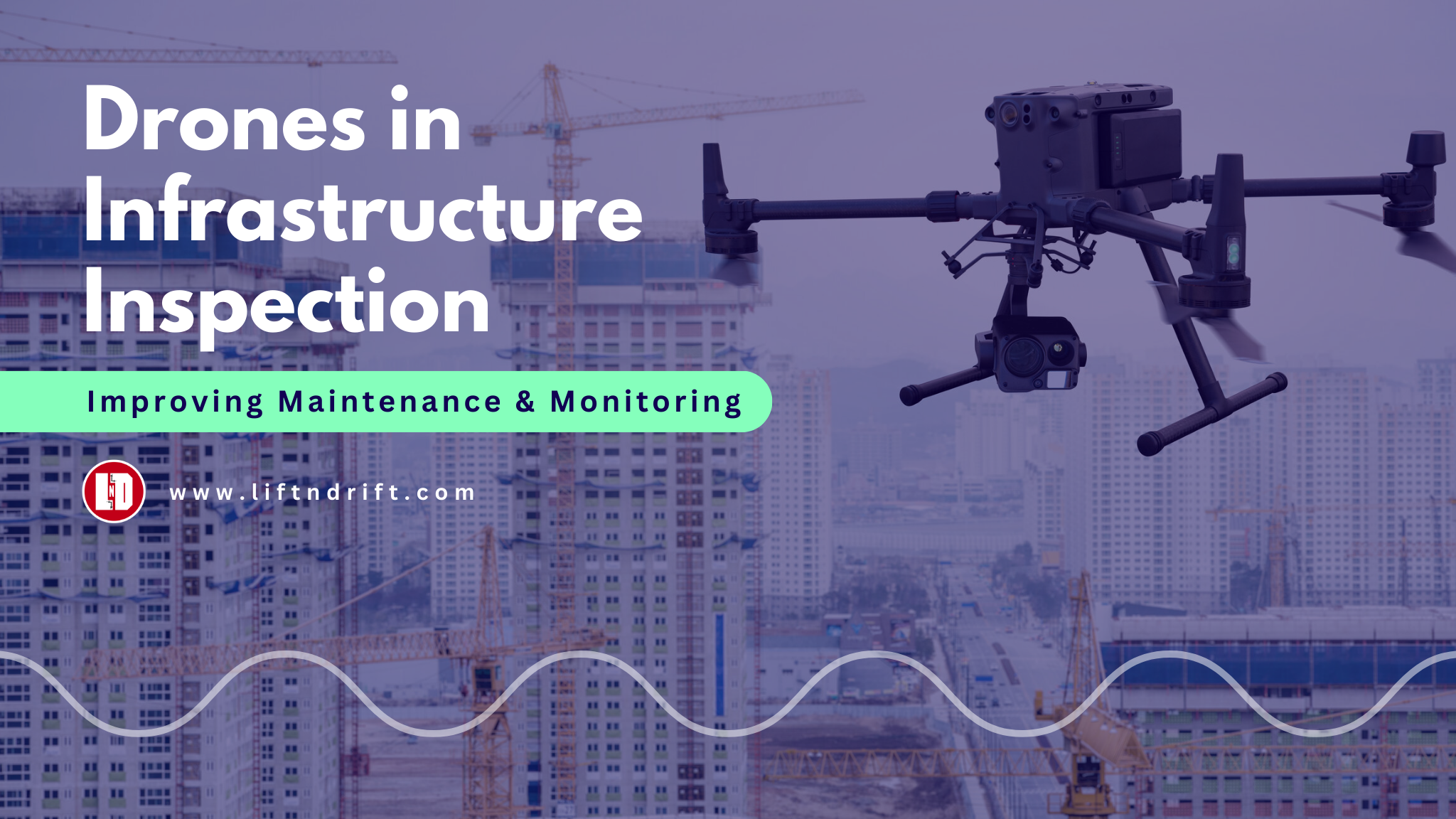In recent years, the use of drones has revolutionized various industries, and infrastructure inspection is no exception. Drones provide a cost-effective and efficient solution for monitoring and maintaining critical infrastructure, such as bridges, pipelines, power lines, and buildings. With their ability to reach inaccessible areas and capture high-quality data, drones have become an invaluable tool for enhancing safety, reducing costs, and improving overall maintenance practices.

1. Enhancing Inspection Efficiency
One of the key advantages of utilizing drones in infrastructure inspection is the significant improvement in efficiency. Traditional inspection methods often require manual labor, lengthy setup times, and expensive equipment. Drones, on the other hand, can be deployed quickly and easily, eliminating the need for scaffolding, cranes, or other complex setups.
By equipping drones with high-resolution cameras, thermal sensors, LIDAR scanners, and even gas detectors, inspectors can gather a wealth of data in a single flight. These sensors allow for close-up visual inspections, identification of structural issues, and the detection of potential defects or leaks. With drones, inspectors can cover large areas in a fraction of the time it would take using conventional methods, reducing operational costs and minimizing disruption to the infrastructure being inspected.
2. Improved Safety and Accessibility
Inspecting infrastructure can be a hazardous task, especially when dealing with hard-to-reach or dangerous locations. Drones provide a safe alternative by eliminating the need for inspectors to physically access precarious positions. Whether it’s inspecting a towering bridge or a remote oil pipeline, drones can access areas that would otherwise require specialized equipment or put human lives at risk.
Furthermore, drones equipped with advanced obstacle avoidance systems and GPS tracking technology can autonomously navigate complex environments, ensuring safe operations even in challenging conditions. By removing human inspectors from potentially hazardous situations, drones contribute to a safer working environment and significantly reduce the risk of accidents or injuries.
3. Aerial Surveillance and Data Collection
Drones excel at capturing high-resolution aerial imagery and collecting accurate data, which is crucial for infrastructure inspection and maintenance. Equipped with high-definition cameras and sensors, drones can capture detailed images and videos of infrastructure components, allowing inspectors to assess their condition with precision.
Moreover, drones can be integrated with sophisticated software applications that enable automated data analysis. This streamlines the inspection process by automatically detecting and highlighting potential issues or anomalies in the captured data. By leveraging artificial intelligence and machine learning algorithms, drones can quickly analyze vast amounts of data and provide actionable insights to inspectors, enabling proactive maintenance and minimizing the risk of unexpected failures.
4. Cost Reduction and Time Savings
Implementing drone-based infrastructure inspection programs can result in substantial cost savings. Traditional inspection methods often involve significant manpower, specialized equipment, and lengthy project timelines. By replacing or augmenting these methods with drones, organizations can reduce labor costs, eliminate the need for expensive equipment rentals, and accelerate the inspection process.
Drones can efficiently cover large areas, enabling inspectors to complete inspections in a fraction of the time required by conventional methods. This increased efficiency translates into significant time savings, allowing organizations to allocate resources more effectively and make informed decisions regarding maintenance or repair activities.
FAQs
Drones play a vital role in infrastructure monitoring by providing a cost-effective and efficient means of inspecting and gathering data about critical assets. Equipped with various sensors, drones can capture high-resolution images, detect anomalies, and monitor structural integrity. The data collected by drones enables organizations to identify potential issues, plan maintenance activities, and ensure the safety and integrity of the infrastructure.
Drones can be used to inspect a wide range of infrastructure, including bridges, pipelines, power lines, buildings, dams, railways, and more. Their versatility and ability to access hard-to-reach areas make them suitable for various types of infrastructure inspections.
Yes, using drones for infrastructure inspection is subject to regulatory guidelines and restrictions. It is important to comply with local aviation authorities’ regulations, obtain necessary permits or licenses, and ensure the safe operation of drones in accordance with applicable laws.
Yes, drones equipped with high-resolution cameras and sensors can detect structural defects or damages by capturing detailed imagery and data. This information can be analyzed to identify cracks, corrosion, deformation, or other signs of deterioration in infrastructure components.
Drone-based inspections provide valuable data that enables organizations to adopt proactive maintenance practices. By identifying potential issues at an early stage, maintenance activities can be planned and scheduled more effectively, reducing the likelihood of unexpected failures and minimizing downtime.
The future of drones in infrastructure inspection holds tremendous potential. Advancements in technology, such as improved sensors, longer flight times, and enhanced data analysis capabilities, will further optimize the inspection process. Additionally, the integration of artificial intelligence and automation will enable drones to perform increasingly complex inspections, leading to even greater efficiency and accuracy.
Drones have revolutionized the field of infrastructure inspection by providing a cost-effective, efficient, and safe solution for monitoring and maintaining critical assets. Their ability to access hard-to-reach areas, capture high-quality data, and facilitate data analysis has significantly improved inspection practices, reduced costs, and enhanced safety. As technology continues to advance, drones will play an increasingly important role in ensuring the integrity and longevity of our infrastructure.
References:
- Flight Science Behind Paper Airplanes
- Flying Paper Airplane
- Best Paper airplane designs
- Flying Paper Airplane for Everyone
- Paper Jet
Related Articles:
- Best Paper Airplane Designs for Distance and Accuracy
- How to Make the Best Paper Airplane That Flies Far
- Easy Paper Airplanes: Simple Designs for Fun Flying

